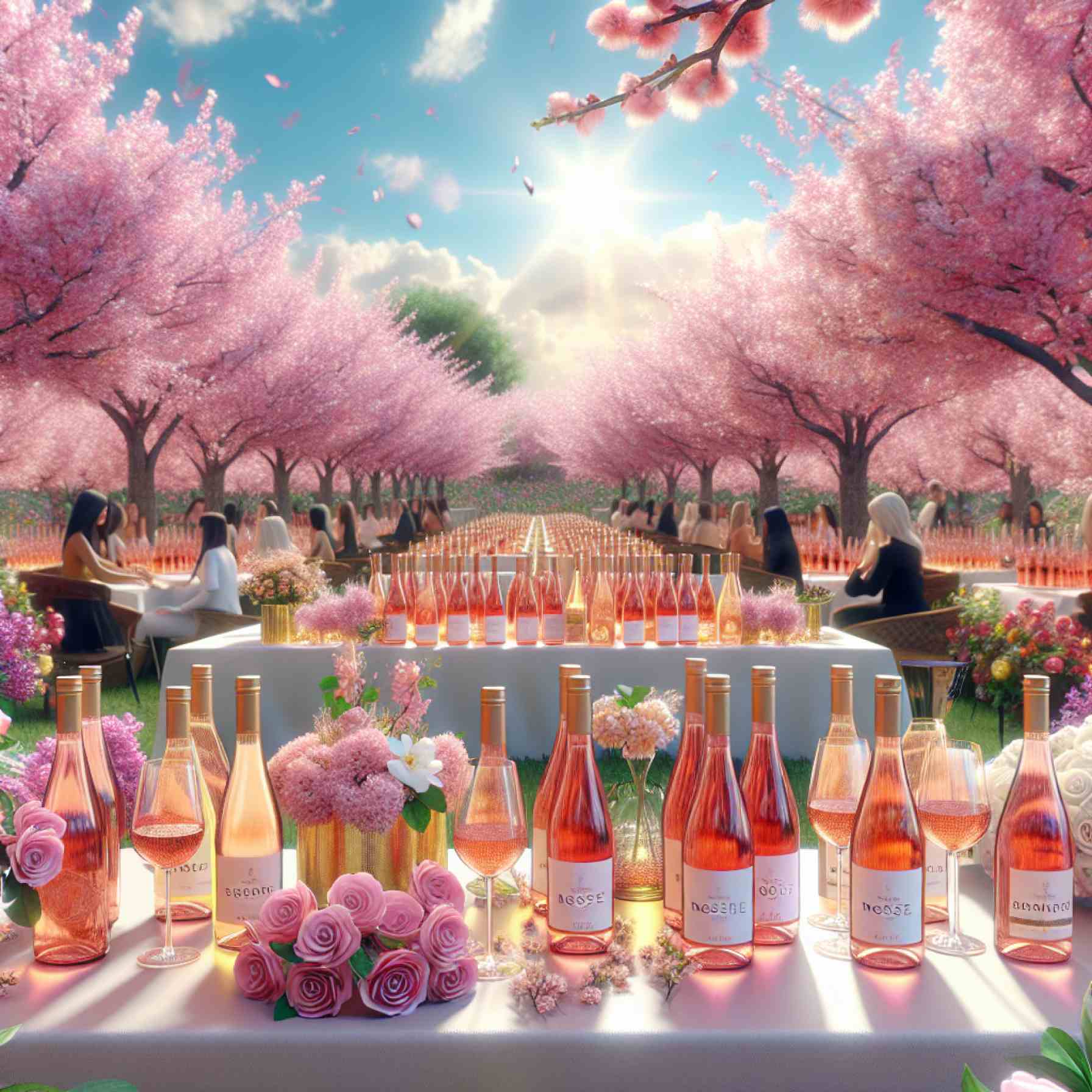- Non-alcoholic rosés are gaining popularity, appealing to both wine connoisseurs and newcomers for their complexity and balance.
- The non-alcoholic wine market is projected to reach $6.94 billion by 2034, driven by a demand for healthier drinking experiences.
- Crafted using traditional techniques, these wines maintain the sophistication expected from fine vintages, minus the alcohol.
- Examples include French Bloom Le Rosé, French vineyards’ offerings, and New Zealand’s Giesen Non-Alcoholic Rosé, each with distinct flavors.
- Non-alcoholic rosés offer a satisfying blend of flavor and craftsmanship, catering to the modern preference for health-conscious indulgence.
- This trend reflects a broader societal shift towards moderation and a refined yet enjoyable drinking culture.
- Non-alcoholic wines provide a new narrative in wine tasting, focusing on flavor, finesse, and a celebration of the art of living well.
As spring unfolds, a revolution in glassware is quietly stirring. Shimmering bottles of non-alcoholic rosé, once overshadowed by their sugary, uninspired predecessors, now bask in newfound glory. Seasoned wine connoisseurs and curious newcomers alike are taking notice, as these zero-proof options redefine what we expect from our wine.
Picture the scene: a sunlit terrace, laughter floating through the air, and in your hand, an elegantly chilled glass that embodies the season’s renewal. The global thirst for healthier, more mindful drinking experiences has sparked a surge in the non-alcoholic wine market, projected to skyrocket to an impressive $6.94 billion by 2034. This shift reflects a broader societal trend, where moderation and sophistication find common ground in a bottle.
Today’s artisans are not merely crafting substitutes; they’re evolving the very essence of wine. By employing age-old techniques like fermentation and lees aging, then carefully removing the alcohol, they maintain the complexity and balance expected from fine vintages. For instance, French Bloom Le Rosé, with its notes of rose petal and wild strawberry, offers the elegant restraint of a high-end vintage without the morning-after headache.
From French vineyards to New Zealand’s scenic slopes, these non-alcoholic rosés shine with distinct personalities. The Giesen Non-Alcoholic Rosé, for example, captures the crisp essence of apple and cranberry, closing with a dry finish that plays between simplicity and sophistication.
In a celebration of the craft, these wines do not attempt to mimic their alcoholic cousins. Instead, they stand as bold statements of flavor and craftsmanship. Jøyus Non-Alcoholic Sparkling Rosé dazzles with bright notes of ripe strawberry and citrus blossom, with fine bubbles that dance on the palate.
These refreshing rosés answer the modern call for both health-conscious options and a sophisticated palate. As society continues to redefine indulgence, the non-alcoholic rosé offers a guilt-free path to celebrate life’s moments, big and small. With each sip, you’re invited to engage in a new narrative—one where flavor, finesse, and fun meet flourish.
The allure of non-alcoholic wine isn’t just in what it excludes, but in what it exceptionally provides: a celebration of flavor and an ode to the art of living well.
Beyond the Bottle: The Rise and Revelation of Non-Alcoholic Rosé
The Rise of Non-Alcoholic Rosé: A Modern Revolution
As the trend toward healthier and more mindful consumption gains momentum, the non-alcoholic beverage market, including non-alcoholic rosé, is experiencing unprecedented growth. With projections estimating the market to reach $6.94 billion by 2034, consumers are increasingly embracing these alternatives for their complexity and sophistication without the drawbacks of alcohol.
The Craft Behind Non-Alcoholic Rosé
Non-alcoholic rosé wines are crafted with care, often using traditional winemaking techniques such as fermentation and lees aging. These methods ensure that the final product retains the complexity and depth expected from conventional wines. By removing the alcohol delicately, winemakers like those behind French Bloom Le Rosé maintain the flavor profile reminiscent of luxury vintages.
Key Features and Flavor Profiles
The diversity within the non-alcoholic rosé market is impressive:
– French Bloom Le Rosé: This offering is noted for its delicate aromas of rose petal and wild strawberry, providing an elegant yet vibrant drinking experience.
– Giesen Non-Alcoholic Rosé: With a crisp apple and cranberry essence, this New Zealand wine delivers a refined dry finish.
– Jøyus Non-Alcoholic Sparkling Rosé: It shines with bright, ripe strawberry notes and citrus blossom, accompanied by lively bubbles that enhance its refreshing character.
Real-World Use Cases and Trends
1. Health-Conscious Lifestyles: Many consumers seeking to reduce alcohol consumption without sacrificing flavor have turned to non-alcoholic rosés as a viable alternative, perfect for social gatherings or casual sipping.
2. Wider Inclusivity: Events are increasingly catering to a broader audience by offering non-alcoholic options, ensuring everyone feels included.
3. Global Appeal: Various regions, from France to New Zealand, have embraced this trend, boasting distinct regional flavors and expressions within their non-alcoholic rosé offerings.
How-To: Choosing the Right Non-Alcoholic Rosé
1. Understand Your Palate: Consider whether you prefer fruity, floral, or dry flavor profiles.
2. Occasion Matters: Pair lighter, bubbly rosés with outdoor parties and bold, complex ones with formal dinners.
3. Check the Ingredients: Look for wines made with high-quality ingredients and minimal additives.
Pros and Cons Overview
Pros:
– Health-friendly with no alcohol content.
– Suitable for all consumers, including non-drinkers and those cutting back on alcohol.
– Offers a wide range of flavors and aromas.
Cons:
– May not fully replicate the depth of alcoholic wines.
– Can be costly compared to alcohol-based wines.
– Limited availability in some regions.
Future Insights and Trends
The non-alcoholic trend will likely continue to expand as consumers prioritize health and inclusivity. Expect more innovations in flavor and production techniques as demand grows.
Recommendations for the Curious Consumer
– Start Small: Begin with single bottles to explore various brands and styles.
– Pair with Food: Try pairing your non-alcoholic rosé with complementary foods like light salads and fruit-based desserts.
– Experiment with Cocktails: Use non-alcoholic rosé as a base for cocktails to create refreshing new experiences.
For more information on wines and related trends, visit Wine Enthusiast or consult Food & Wine for expert recommendations and reviews.
